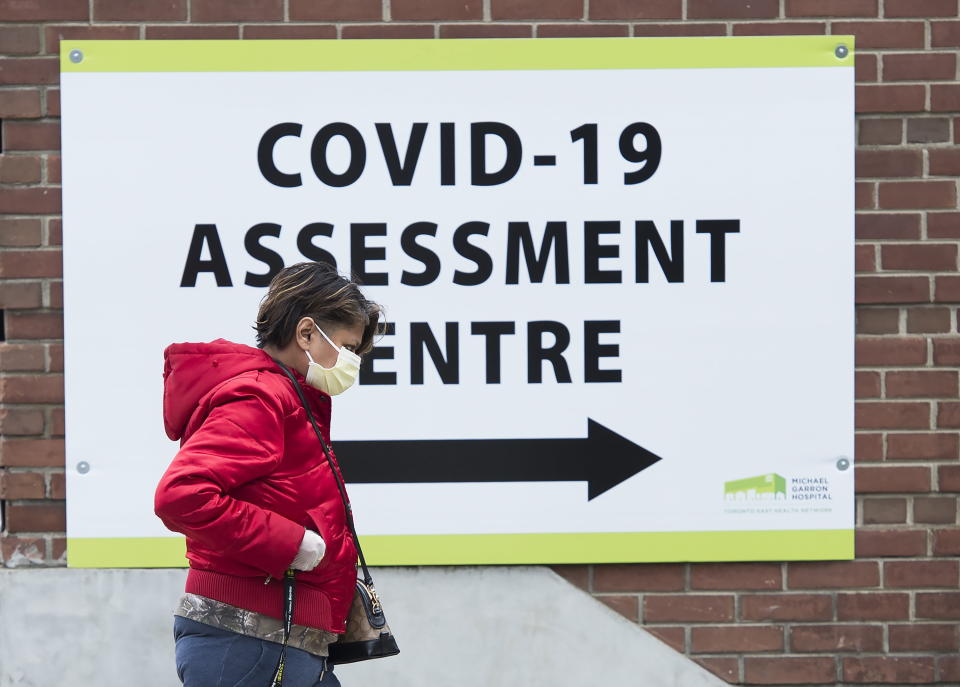COVID-19: How to know when you can stop self-isolating after symptoms
Looking for more of the best deals, latest celebrity news and hottest trends? Sign up for Yahoo Lifestyle Canada’s newsletter!

To stop the spread of COVID-19, health experts around the world continue to emphasize the importance of staying home if you’re exhibiting any symptoms, like fever and dry cough.
But those who are recovering at home, what does self-isolating actually look like? And how can someone with COVID-19 symptoms avoid getting others in their household ill?
“If you are sick, that means avoiding contact with other family members,” Canada’s Deputy Chief Public Health Officer Dr. Howard Njoo said at a recent media briefing.
“If people are sick, they need to stay in their house, stay in their room, and not interact with anyone,” added Health Minister Patty Hajdu.
While information related to the novel coronavirus and COVID-19 (the illness it causes) is changing at a lighting pace, people should stay up-to-date with the most current advice coming from public health authorities.
Besides cough and fever, other signs are malaise, runny nose, fatigue, sore throat, nausea, vomiting and/or diarrhoea, according to the B.C. Centre for Disease Control. More severe symptoms include shortness of breath, difficulty breathing and chest pain.
In practical terms, the Centers for Disease Control and Prevention suggests people recovering at home and their family members follow several recommendations to reduce the risk of spread:
Besides staying in their own room, the person who is sick should use their own bathroom if possible. They should wash their hands thoroughly before and after using the washroom. High-touch surfaces, such as doorknobs, light switches, toilet handles, taps, sinks, and countertops, should be wiped down after each use of the washroom by the infected person.
Clean any surfaces that may have blood, stool, or body fluids on them.
Do not share towels.
Do not share dishes, drinking glasses, cups, utensils, bedding, books, newspapers, remote controls, laptops, mobile devices, keyboards, or any other common items in the home.
After the infected person handles plates, bowls, glassware and utensils, they should be washed thoroughly. Family members should only pick up these items with disposable gloves and they should wash their hands properly afterward (even after removing gloves).
Household members should care for pets. Unfortunately, those who are ill should not be petting or cuddling with their beloved animal.
When possible, leave windows open in shared spaces or otherwise ensure good air flow.
Up your laundry game. When handling the sick person’s clothing or bedding, use disposable gloves or wash hands thoroughly afterward (even after removing gloves). Wash their laundry separately.
The person who’s ill should wear a mask when around family members. If this isn’t possible because it makes breathing difficult, household members should wear a mask when in the same room.
Throw out disposable masks and gloves after using them. Do not reuse. Immediately wash hands after removing.
Once someone starts to feel better, it’s crucial not to let your guard down. Only once they are clear of symptoms, most notably fever, should they consider interacting with family members and others.
ALSO SEE: No concrete evidence ibuprofen makes COVID-19 worse: health experts
“After the recovery period and you no longer have symptoms, it’s OK to do something outside: you can go for a walk, bike ride, or run, but not in places when you come into contact with other people,” Henry said. “If you still have symptoms, it’s not OK to go in a grocery store or in a taxi, but yes it’s OK to go out with your dog in the backyard or walk your dog in in a secluded place by yourself. Maintain your distance from others.”
Those with symptoms but unknown infection status can use the BC Ministry of Health’s COVID-19 self-assessment tool to determine their next steps.
Let us know what you think by commenting below and tweeting @YahooStyleCA! Follow us on Twitter and Instagram and sign up for our newsletter.



